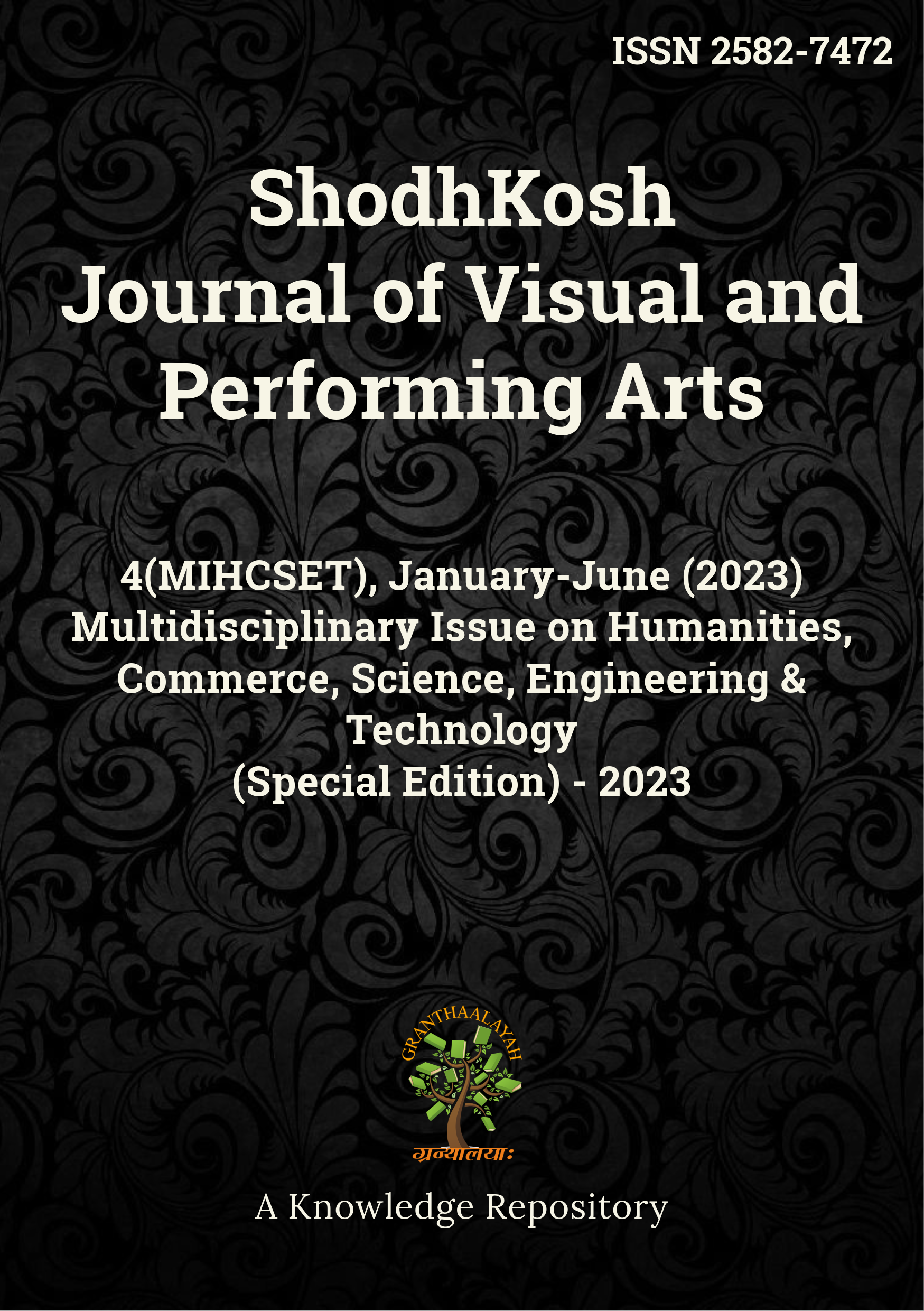A STUDY OF FINTECH FOR DIGITAL INDIA
DOI:
https://doi.org/10.29121/shodhkosh.v4.iMIHCSET.2023.6326Keywords:
Fintech Adoption, Age Demographics, Perceived Security, India, Digital Finance, User BehaviorAbstract [English]
Researching this issue in terms of age population structure, attitude to the use of financial technology services, this article analyzes the difference between adoption and attitude to the use of fintech services among the customers themselves in India. In order to overcome the conception of the perceived credibility of one electronic finances and patterns of electronic finances usage and utilization, a number of 103 worked questionnaires and a set of standard questionnaire (was used to argue in favor of the paper). Data were analyzed statistically (pearson correlation, ANOVA and chi-square test). The online transfer of money is the most popular of the services. According to the results, the most active users are younger users (18-25 years old): they are more aware of money transfer. They have found that frequency of use and the perceived security are closely related; this just makes sense, since you need to trust knowledge more to feel safe. These hindrances to implementation of the Fintech were pooled together as the general hurdles to the implementation of this simple product in the survey and were correlated with the problem of information privacy and the absence of messages targeting people, who are not part of urban youth communities. It ends with a few suggestions on platform design (similar to user-centric design) and policies frameworks that represent all user groups. The article also adds to the existing body of knowledge on Indian financial services sector and Indian digital revolution by listing some of the gaps in the available literature on fintech in terms of its data-driven aspects.
References
Rathore, U., Saxena, A., & Thakkar, A. (2023). A study on fintech and digital transformation of financial service. International Journal of Creative Research Thoughts, 11(2), 233–245. https://ijcrt.org/papers/IJCRT2302233.pdf
Arner, D. W., Barberis, J., & Buckley, R. P. (2016). 150 years of Fintech: An evolutionary analysis. JASSA The Finsia Journal of Applied Finance, (3), 22.
Bauguess, S. W. (2017). The role of big data, machine learning, and AI in assessing risks: A regulatory perspective. U.S. Securities and Exchange Commission. DOI: https://doi.org/10.2139/ssrn.3226514
Belanche, D., Casaló, L. V., & Flavián, C. (2019). Artificial intelligence in FinTech: Understanding robo-advisors adoption among customers. Industrial Management & Data Systems, 119(7), 1411–1430. DOI: https://doi.org/10.1108/IMDS-08-2018-0368
Beyond COVID-19: New Opportunities for fintech companies. (2020). Deloitte. https://www2.deloitte.com/us/en/pages/financial-services/articles/beyondcovid-19-new-opportunities-for-fintech-companies.html
Broadband Highways. (n.d.). Digital India. https://www.digitalindia.gov.in/content/broadband-highways
Chen, M. A., Wu, Q., & Yang, B. (2019). How valuable is FinTech innovation? The Review of Financial Studies, 32(5), 2062–2106. DOI: https://doi.org/10.1093/rfs/hhy130
Das, S. (2019). Opportunities and challenges of FinTech. Monthly Newsletter, 26–29. CCIL.
Government of India. (2008). Committee on Financial Inclusion (Chairman: Dr. C. Rangarajan).
Gupta, S. K. (2011). Financial Inclusion – IT as an enabler. RBI Occasional Paper, 32(2).
Jutla, S., & Sundararajan, N. (2016). India’s FinTech ecosystem. In The FinTech Book (pp. 56–57). Wiley. DOI: https://doi.org/10.1002/9781119218906.ch15
Das, S. (2023, September 6). FinTech and the Changing Financial Landscape. Reserve Bank of India. https://www.rbi.org.in/Scripts/BS_SpeechesView.aspx?Id=1383
Sankar, T. R. (2023, September). FinTech Innovation and Approach to Regulation. Reserve Bank of India. https://www.rbi.org.in/Scripts/BS_SpeechesView.aspx?Id=1383
Swamy, V. (2023). Adapting to Digital Disruption: A Digital Transformation Strategy for Indian Banks. The Journal of Indian Institute of Banking & Finance, 1–9. https://www.iibf.org.in/documents/BankQuest/2.%20Adapting%20to%20Digital%20Disruption%20A%20digital%20transformation%20strategy%20for%20Indian%20Banks%20-%20Dr%20Vigneswara%20Swamy.pdf
Padhy, L. (2023). Digital Disruptions in the Indian Banking Sector – Opportunities and Challenges. The Journal of Indian Institute of Banking & Finance, 32–42. https://www.iibf.org.in/documents/BankQuest/5.%20Digital%20Disruptions%20in%20the%20Indian%20Banking%20Sector%20-%20Opportunities%20and%20Challenges%20-%20%20Dr%20Lakshmi%20Prasad%20Padhy.pdf
Rao, M. R. (2023, January 18). Innovations in Banking – The Emerging Role for Technology and AI. Reserve Bank of India. https://www.rbi.org.in/Scripts/BS_ViewBulletin.aspx?Id=22318
McKinsey & Company. (2019). Digital India: Technology to Transform a Connected Nation. McKinsey Global Institute. https://www.mckinsey.com/capabilities/mckinsey-digital/our-insights/digital-india-technology-to-transform-a-connected-nation
Downloads
Published
How to Cite
Issue
Section
License
Copyright (c) 2023 Ratikanta Ray, Mamatamayee Rout

This work is licensed under a Creative Commons Attribution 4.0 International License.
With the licence CC-BY, authors retain the copyright, allowing anyone to download, reuse, re-print, modify, distribute, and/or copy their contribution. The work must be properly attributed to its author.
It is not necessary to ask for further permission from the author or journal board.
This journal provides immediate open access to its content on the principle that making research freely available to the public supports a greater global exchange of knowledge.































